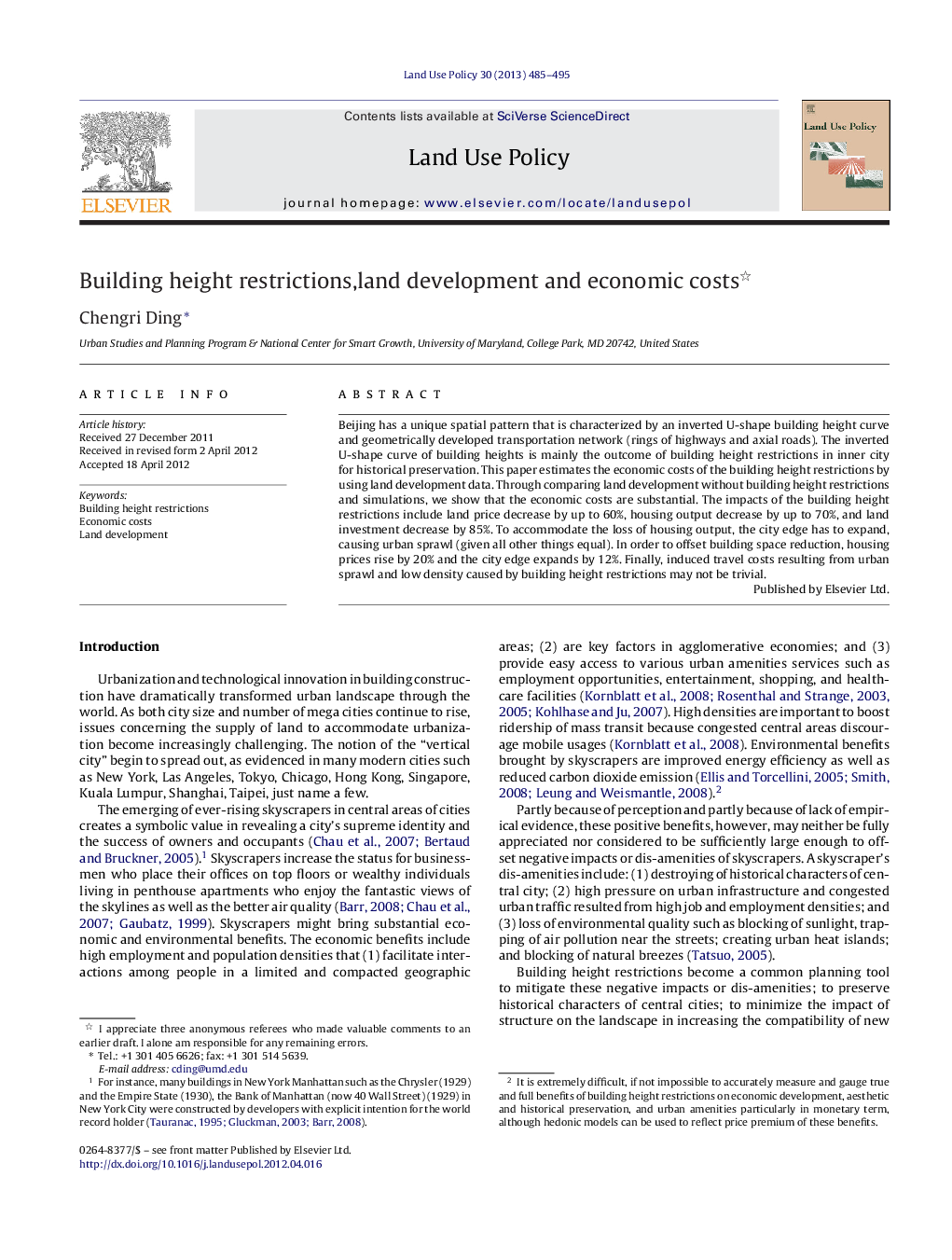| Article ID | Journal | Published Year | Pages | File Type |
|---|---|---|---|---|
| 93010 | Land Use Policy | 2013 | 11 Pages |
Beijing has a unique spatial pattern that is characterized by an inverted U-shape building height curve and geometrically developed transportation network (rings of highways and axial roads). The inverted U-shape curve of building heights is mainly the outcome of building height restrictions in inner city for historical preservation. This paper estimates the economic costs of the building height restrictions by using land development data. Through comparing land development without building height restrictions and simulations, we show that the economic costs are substantial. The impacts of the building height restrictions include land price decrease by up to 60%, housing output decrease by up to 70%, and land investment decrease by 85%. To accommodate the loss of housing output, the city edge has to expand, causing urban sprawl (given all other things equal). In order to offset building space reduction, housing prices rise by 20% and the city edge expands by 12%. Finally, induced travel costs resulting from urban sprawl and low density caused by building height restrictions may not be trivial.
► We simulate land development patterns without building height restrictions. ► We conclude that building height restrictions in Beijing can cause deinvestment in land development, drop both land prices, and induce urban sprawl by significant margins. ► We also conclude that building height restrictions may have adversely affect land development through their limitation on the substitution elasticity between capital and land inputs.
